Isolation 20.9 mi (33.6 km) Elevation 4,352 m Prominence 715 m | Easiest route Hike/scramble First ascent 1873 | |
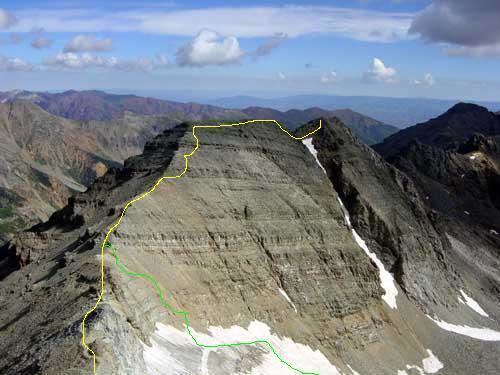 | ||
Listing North America highest peaks 38thUS highest major peaks 24thColorado highest major peaks 9thColorado fourteeners 9thColorado county high points 9th First ascender Ferdinand Vandeveer Hayden Similar La Plata Peak, Mount Lincoln, Mount Harvard, Mount Wilson, Crestone Peak | ||
Castle Peak is the ninth highest summit of the Rocky Mountains of North America and the U.S. state of Colorado. The prominent 14,279-foot (4352.2 m) fourteener is the highest summit of the Elk Mountains and the Maroon Bells-Snowmass Wilderness. The peak is located 11.6 miles (18.7 km) northeast by north (bearing 32°) of the Town of Crested Butte, Colorado, United States, on the drainage divide separating Gunnison National Forest and Gunnison County from White River National Forest and Pitkin County. The summit of Castle Peak is the highest point of both counties.
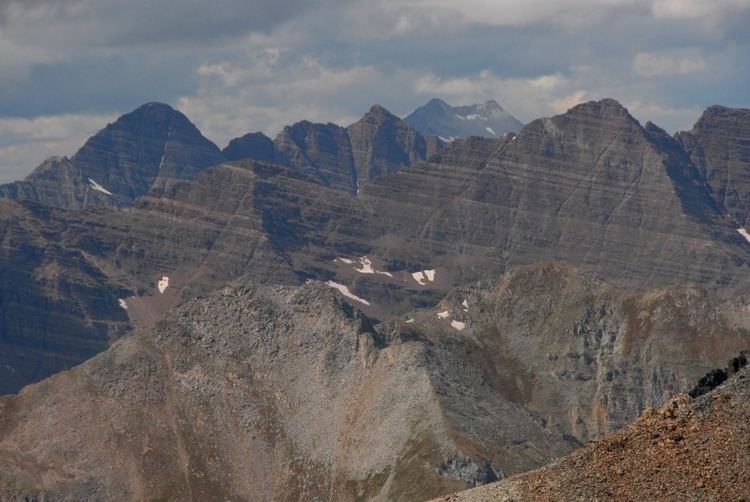
MountainEdit
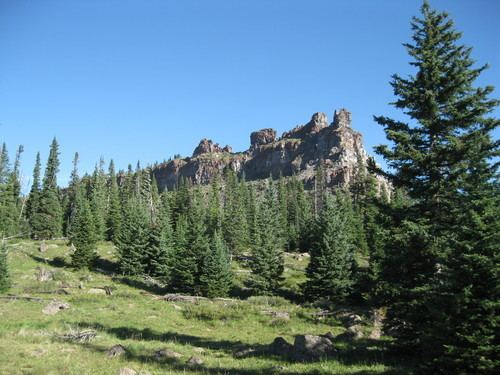
Castle Peak takes its name from its castellated summit. The best climbing months are June, July, August, September through the Montezuma Glacier, a permanent snowfield between Castle and Conundrum Peaks. There are two standard routes for ascent. The Northwest Ridge features a moderate snow climb followed by an easy ridge scramble. It should not be attempted late in the summer when the 200 feet (60 m) of loose dirt and scree meet the climber near the top of the Castle-Conundrum saddle. The Northeast Ridge features an easy snow climb, but slightly harder scrambling and route-finding once on the ridge.
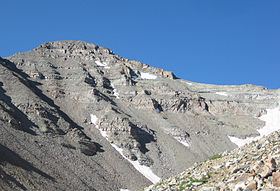
There are two other peaks in Colorado that have the same name: one in Eagle County at 39°46′23″N 106°50′04″W, with an elevation 11,280+ feet, (3438+ m); and the other in Mesa County at 39°16′16″N 108°05′40″W, with an elevation of 8,140 feet (2,481 m).
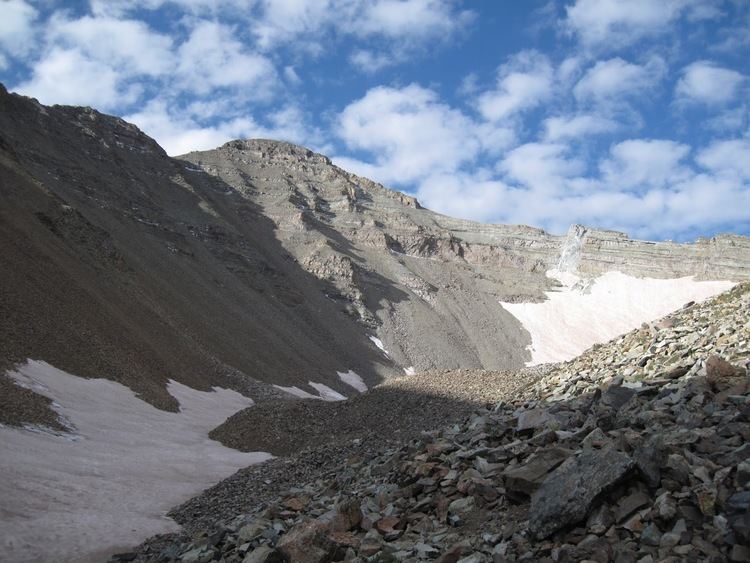
Conundrum Peak is a northern subsummit of Castle Peak. It has two closely spaced summits; the northern is higher, with elevation of 14,040+ feet (4279+ m). It is 0.4 miles (0.6 km) north of Castle Peak, and has 200 feet (61 m) of clean topographic prominence. This does not meet the usual 300-foot (91 m) prominence criterion for an officially separate peak; however, it is often climbed in conjunction with Castle Peak.
